Bannock Recipe
- Samantha Erin
- Jul 19, 2022
- 2 min read
Updated: May 15, 2023

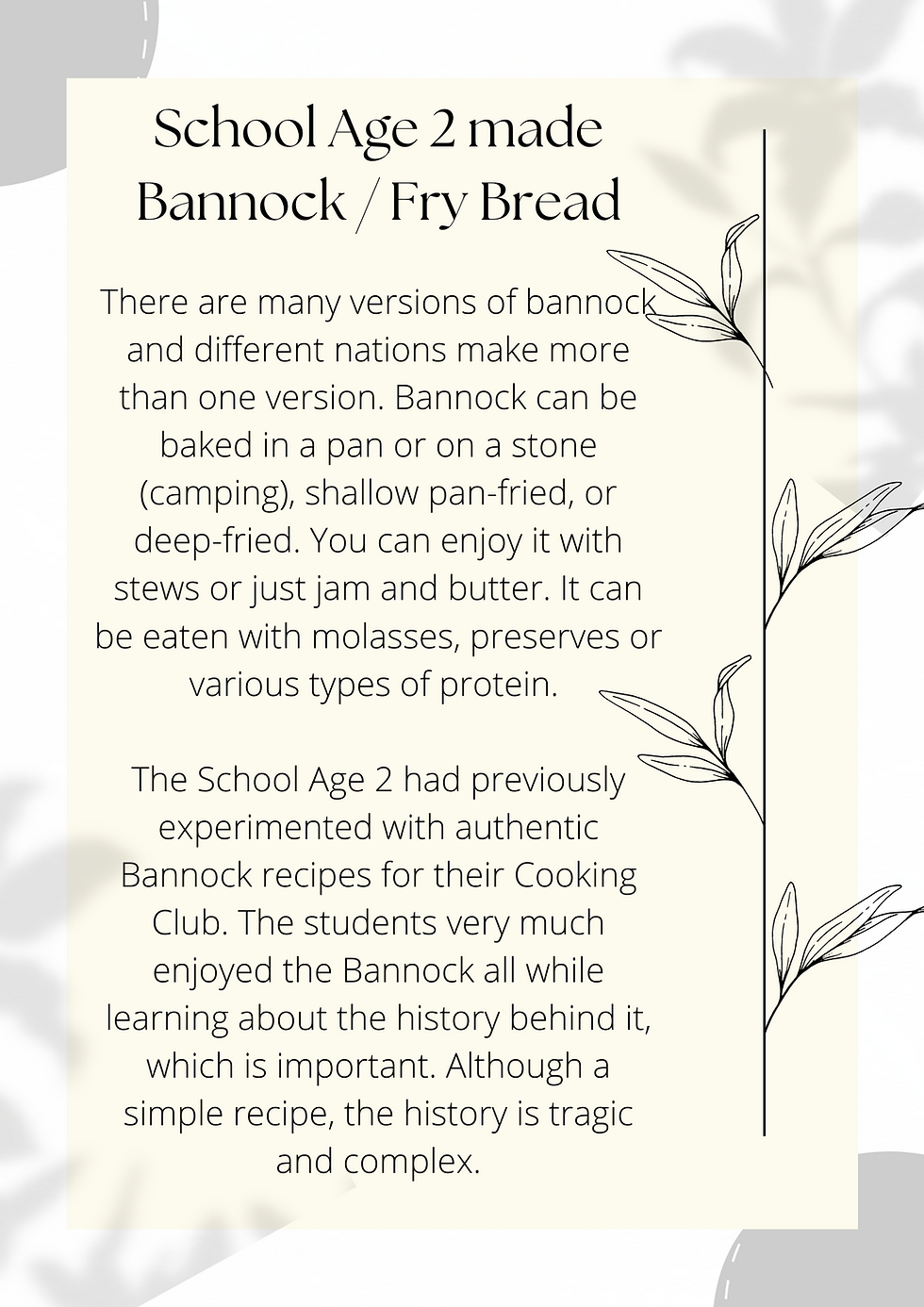



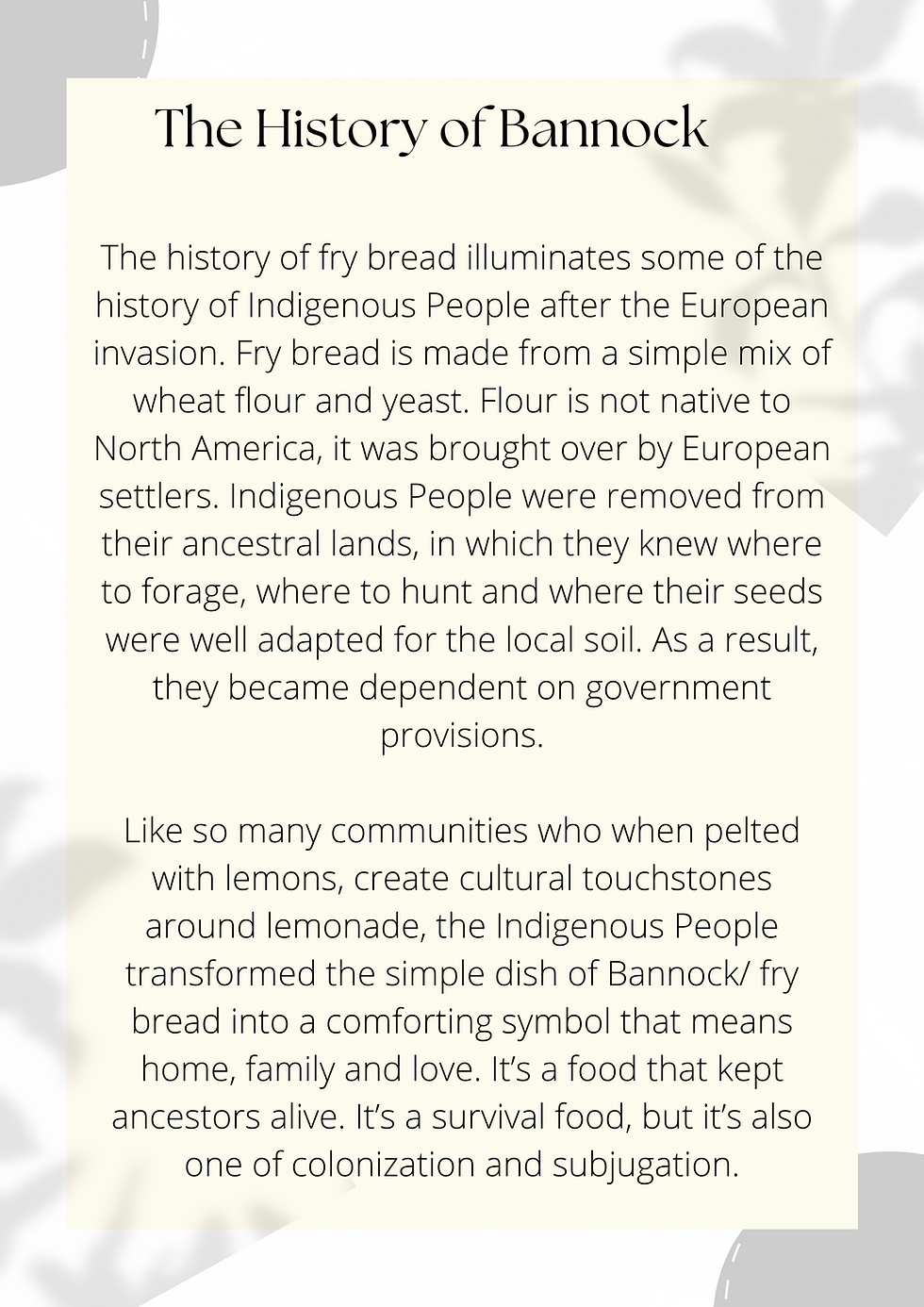
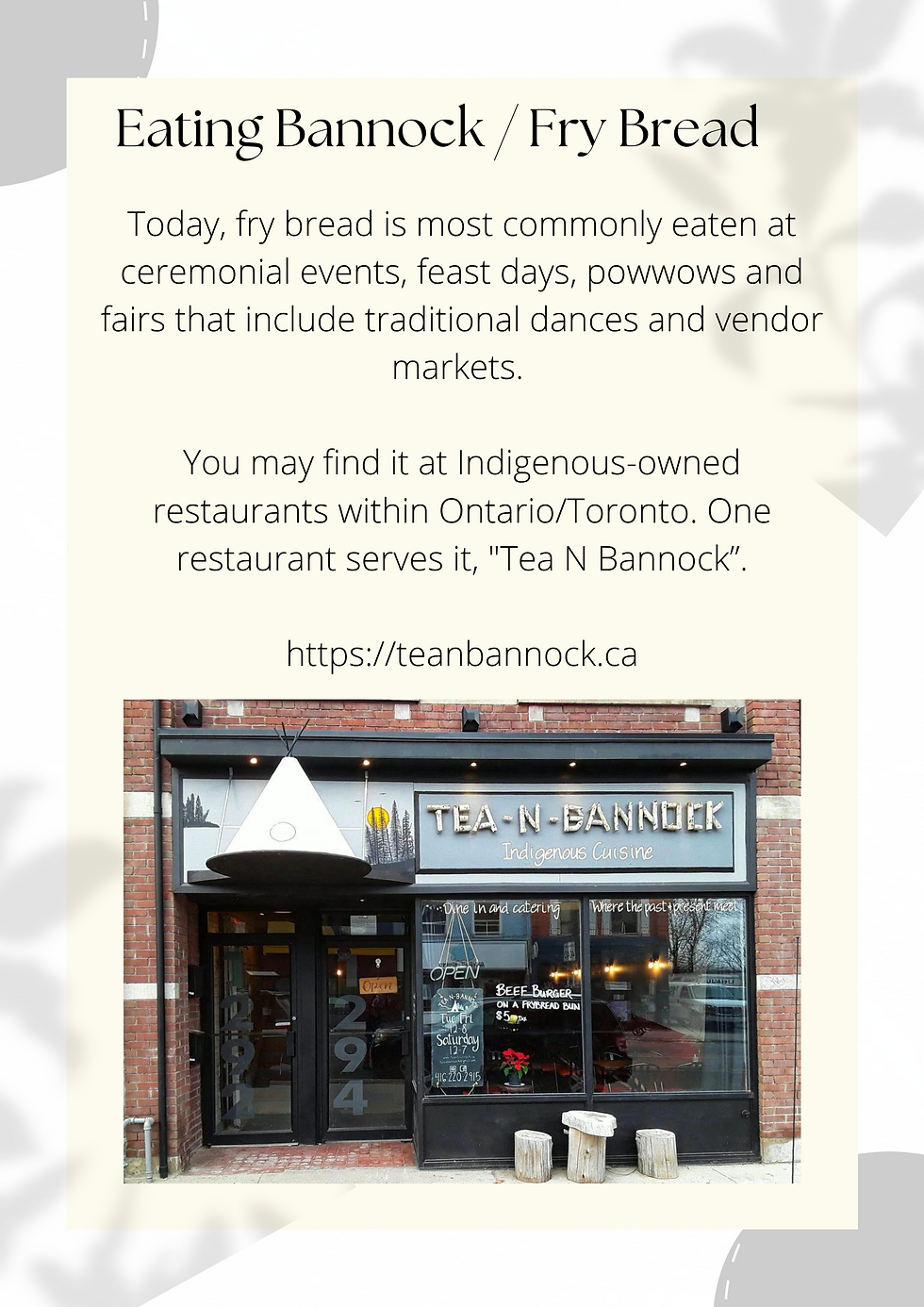
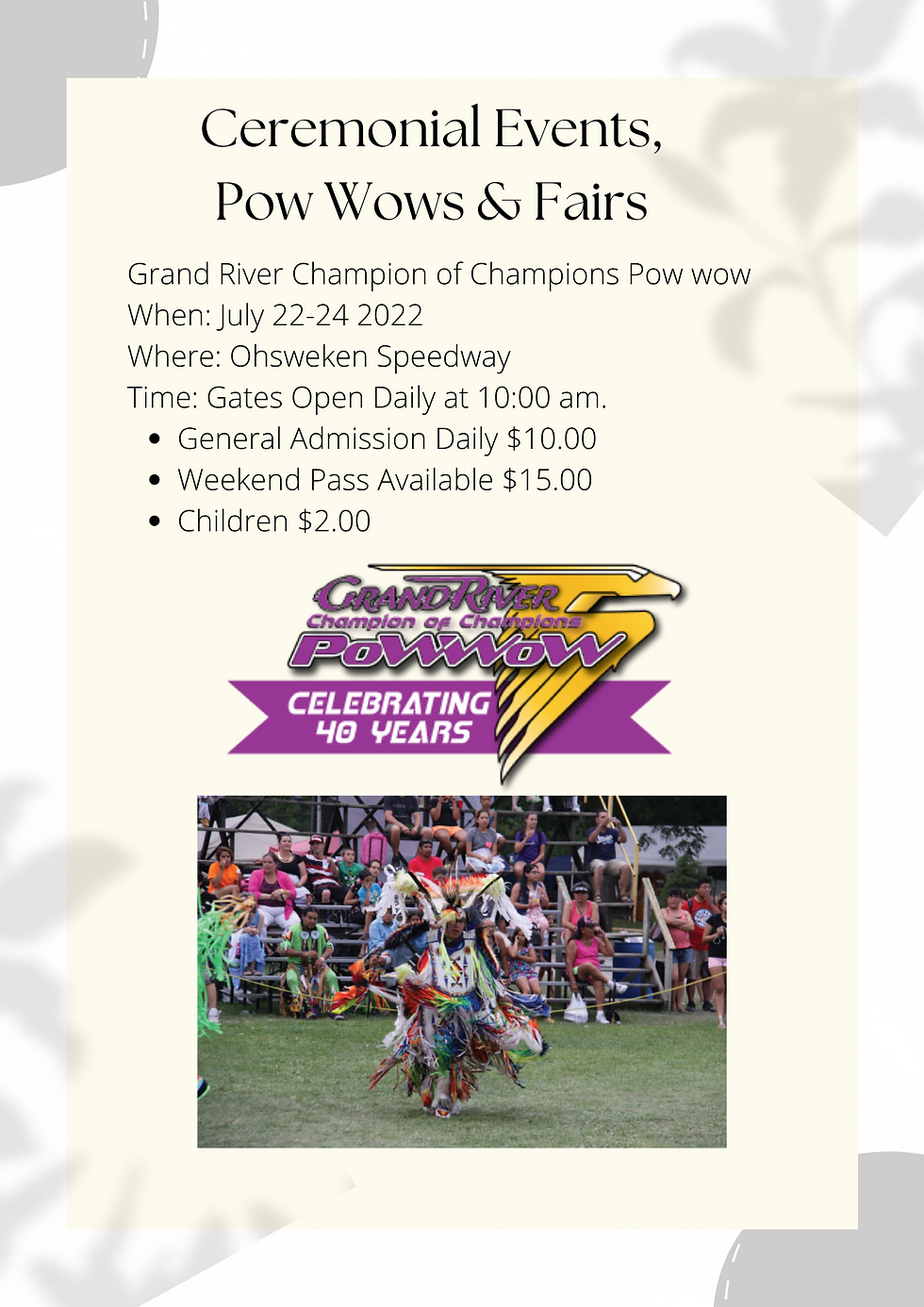
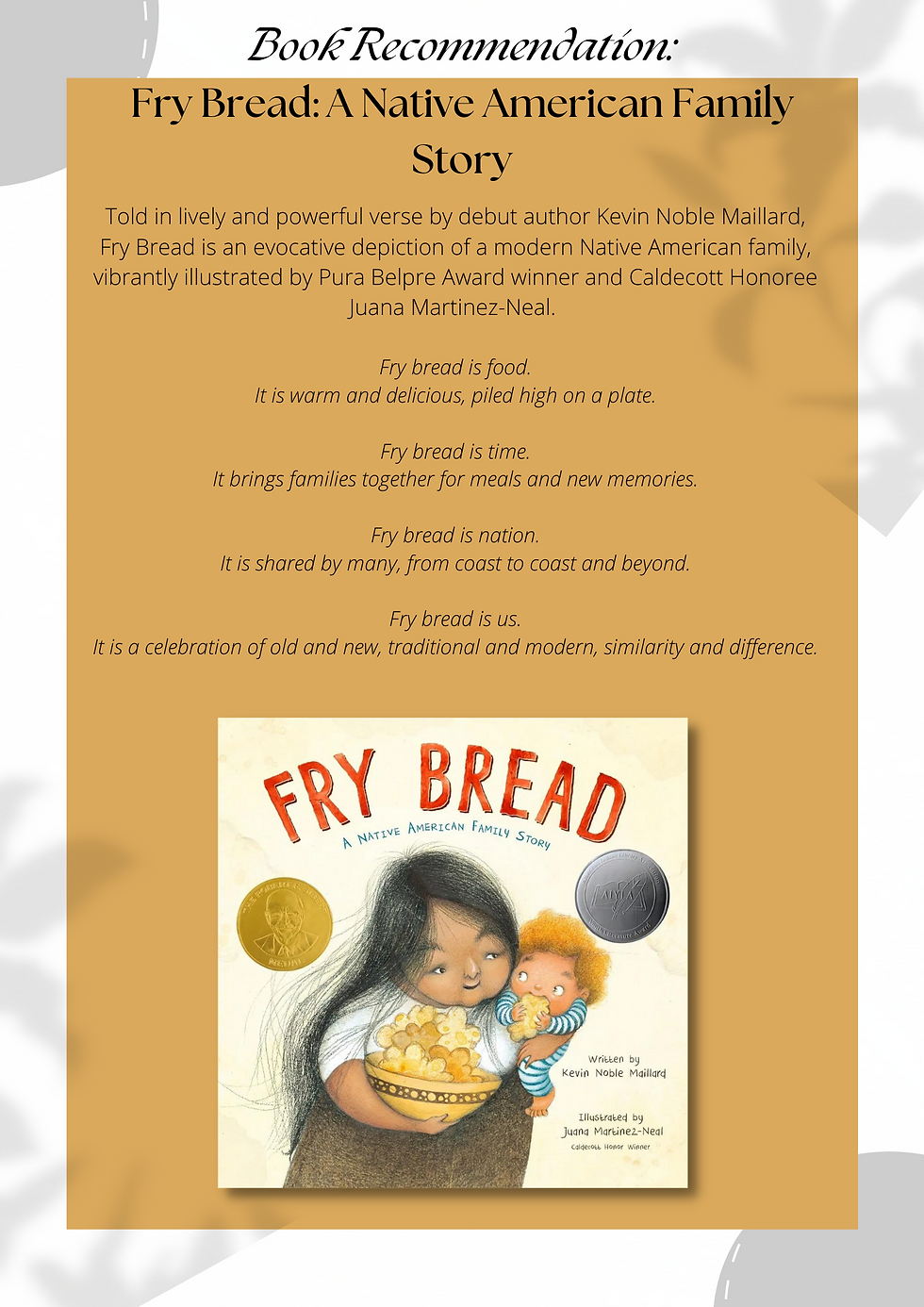
Have you tried Bannock/ Fry Bread? Here is a recipe our SA2 Class tried!
There are many versions of bannock and different nations make more than one version. Bannock can be baked in a pan or on a stone (camping), shallow pan-fried, or deep-fried. You can enjoy it with stews or just jam and butter. It can be eaten with molasses, preserves or various types of protein.
The School Age 2 had previously experimented with authentic Bannock recipes for their Cooking Club. The students very much enjoyed the Bannock all while learning about the history behind it, which is important. Although a simple recipe, the history is tragic and complex.
The history of fry bread illuminates some of the history of Indigenous People after the European invasion. Fry bread is made from a simple mix of wheat flour and yeast. Flour is not native to North America, it was brought over by European settlers. Indigenous People were removed from their ancestral lands, in which they knew where to forage, where to hunt and where their seeds were well adapted for the local soil. As a result, they became dependent on government provisions which are full of chemicals, preservatives, sugars, and salt. Like so many communities who when pelted with lemons, create cultural touchstones around lemonade, the Indigenous People transformed the simple dish of Bannock/ fry bread into a comforting symbol that means home, family and love. It’s a food that kept ancestors alive. It’s a survival food, but it’s also one of colonization and subjugation.
Today, fry bread is most commonly eaten at indigenous-owned restaurants, ceremonial events, feast days, and powwows, fairs that include traditional dances and vendor markets.
Bannock
Ingredients:
3 cups (750 ml) sifted flour
1 tsp (5 ml) salt
1–2 tbsp (15–30 ml) baking powder
Water Vegetable oil or lard
Method:
Mix half of the flour with the remaining dry ingredients.
Add water until the mixture becomes thick, like paper maché paste. Add more flour until the dough feels like a soft earlobe.
Heat the oil over medium-high heat until very hot but not smoking.
Break off small pieces of the dough, and flatten each to the size of your palm
Place the pieces in the hot oil.
Turn over after 3–4 minutes, or when golden brown.
Place the bannock on a paper towel to soak up the excess grease.
Serve plain or with maple syrup or blueberry jam.





Comments